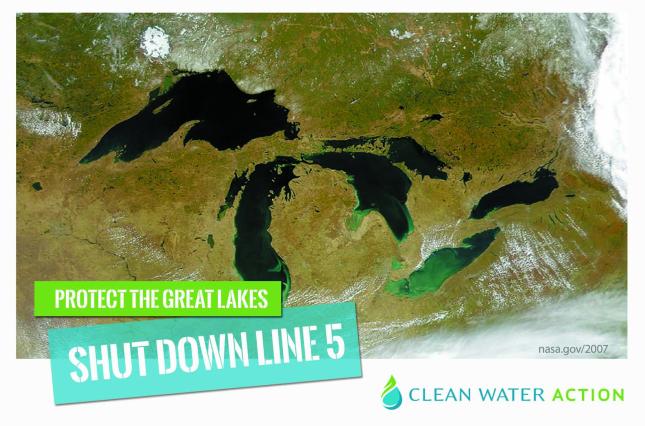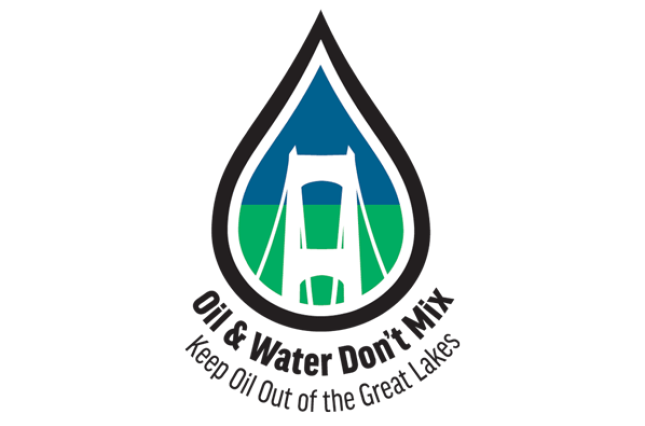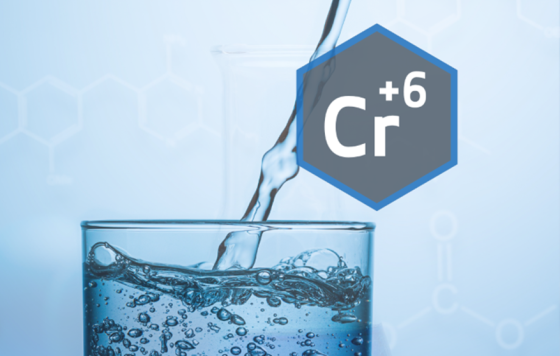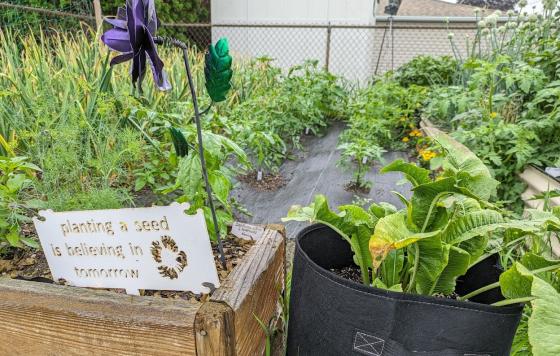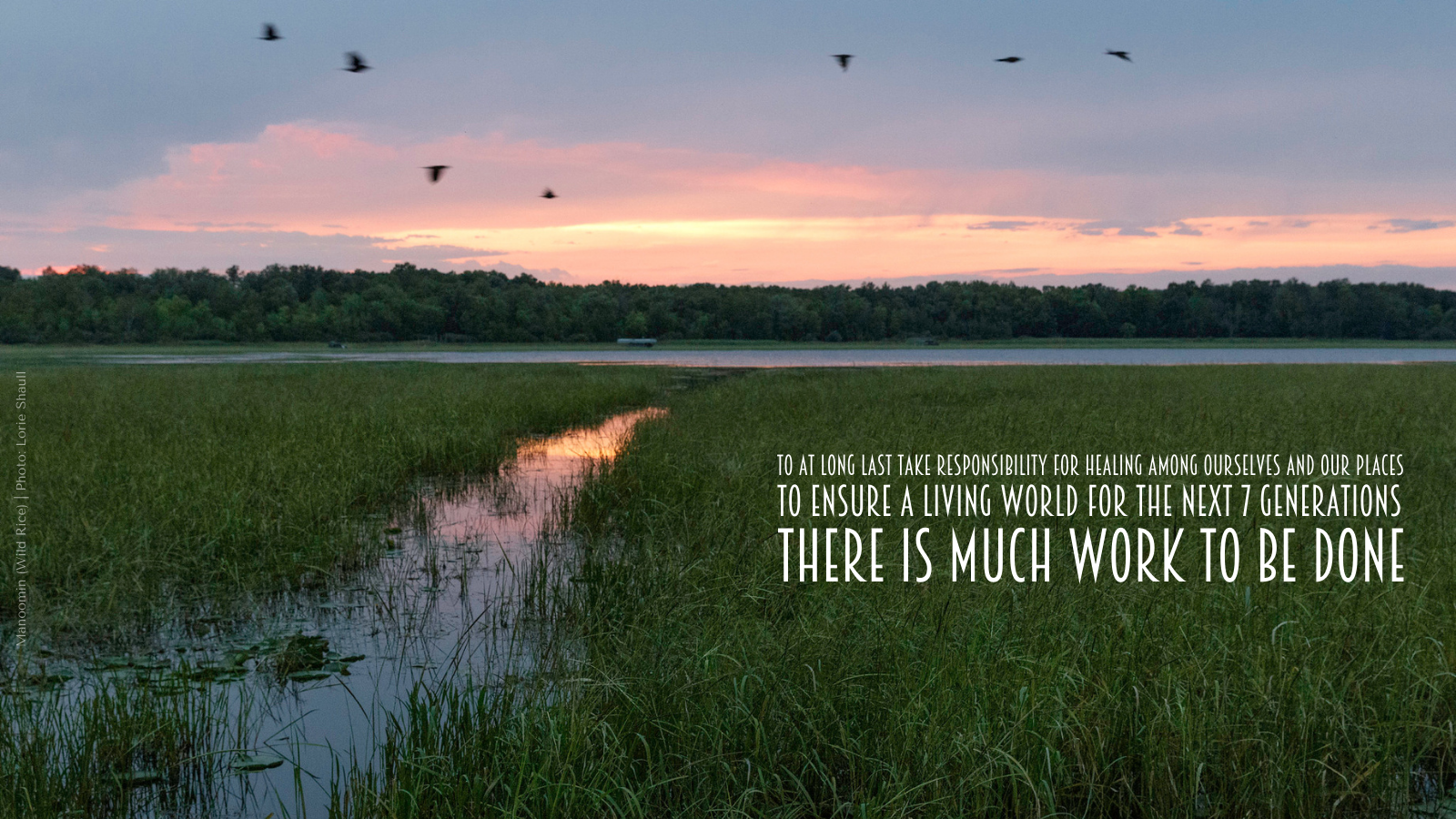
Clean Water Action encourages friends, Clean Water Action members, and partners in communities across the country to join us in recognizing Indigenous Peoples’ Day on October 9th, 2023, Native American Heritage Month in November, and of the knowledge, passion and dedication of Indigenous activists in the environmental movement and beyond throughout the year.
Over 500 federally recognized Indigenous Nations share the geography of what is currently known as the United States, and hundreds more lack official recognition. This land has also become home to Indigenous immigrants from across the continent and around the world.
Dr. Nichole Keway Biber, a Clean Water Action organizer in Michigan and Little Traverse Bay Bands (LTBB ) of Odawa tribal citizen, shares her thoughts and perspective in this powerful blog.
In the cultural traditions and spiritual instructions of the Anishinaabe, we uphold the philosophy Gidinawendimin - We Are All Related. As all nations now collectively bear witness to the 6th mass extinction event, it is true that many people are becoming more cognizant of the respect due to other living beings. Still, as any grassroots activist or organizer quickly becomes aware, it is those in power who continue to have outsized influence as to what philosophies are guiding policy and action priorities. With this in mind, I invite all who work for the good of the water, air, land, and communities to take note of whether and how often discussions about Climate Action include any mention of the biodiversity crisis. In my experience, the answer to that, unfortunately, is not at all or very rarely. And when the fate of the living biomass does enter conversations about Climate Crises, even then the benefits of green infrastructure are only glancingly referred to, way down on the list of mitigation strategies.
If the results we seek are to be truly transformative and ultimately healing, this failure to take notice of the biodiversity crisis represents a foundational error of approach. Decision makers must commit to remediation and restoration of habitat at least as enthusiastically as to any plans about EVs and solar panels, and it will take the concerted efforts of environmentally conscientious people and organizations to pressure them to do so.
Bringing ecological restoration to the forefront of Climate Action strategies invites a sober accounting of the core damages wrought upon vulnerable communities by the excesses of exploitative, colonial Capitalism. Such reckonings and efforts at reparation are upheld as a central tenet of Environmental Justice. Consider then how the wounds of extraction that have brought vulnerable human communities to the brink, are also continually borne by the other-than-human lives who are similarly discounted and degraded by the same warped mentality that values profits over people. It is so very difficult to continually witness the displacement, extermination, and hunger of our animal relatives, who are often deemed guilty of simply being in the way. Shouldn't we begin to seriously question why it is so easy to zone and permit for yet another development of dwindling green spaces, while at the same time abandoned big box stores and parking lots sit as blight in countless neighborhoods? And when habitat loss is repeatedly cited as the major contributing factor to plunging pollinator populations and other wildlife stresses?
It is at times overwhelming to consider the many ways that all living beings, human and more-than-human, are paying the price for the short-sightedness of irresponsible decision-making that has, decade after decade, sacrificed the health and longevity of the natural world. Clean water is squandered; countless extinct and endangered species; entire communities of people beset by pollution-for-profit throughout generations are all unwitting victims of an exploitative, hubristic approach. The profiteers of this imbalance are intent on using the world as little more than a source of profits for the few while masking and subsidizing the hidden costs of nominal convenience for the masses. Notice how We the People are now often referred to as consumers.
The insatiable hunger for convenient consumption is the stuff of horror stories in Anishinaabe tales of the Wiindigo - a hungry monster of greed devouring all, only to grow more desperate and massive as its frozen heart shrinks ever smaller. Yet still projects such as the Mountain Valley Pipeline, the Willow project, and here in Michigan the continued operation of Enbridge’s 70-year-old Line 5 pipeline beneath the heart of the Great Lakes waters - are all enjoying subsidies at the very moment we are at such a consequential crossroads. It is particularly perverse to willfully pollute and endanger the waters and fish and animals and communities of the increasingly few and far between intact ecosystems remaining on the planet. The damages wrought upon First Nations lands and Black frontline neighborhoods, daily harmed by the taking and delivery of oil, currently and cumulatively take an enormous toll on physical and mental health. For people of the 7th Fire generation (among whom I include myself as I do my best to relearn and revive the cultural teachings that were wrested away from us and nearly lost), should the sheer luck we have leaned so heavily upon run out and a Line 5 rupture occurs, the dire consequences to traditional and current lifeways would be so dismal as to end all hopes of revitalizing cultural practices wholly dependent upon the living earth and waters and all the beings they support.
To at long last take responsibility for healing among ourselves and our places to ensure a living world for the next 7 Generations, there is much work to be done in terms of restoration and progressively dismantling a poisonous machine. The new development and continued entrenchment of fossil fuel infrastructure must repeatedly and vocally be rejected as dangerous violations of the public trust and our collective long-term security. This includes petrol-based chemical fertilizers and pesticides that destroy the soil and pollute the water, ever-propping up a mechanized version of monocropped agriculture and landscaping unable to support life in the long term. Further despoilment of the earth and her creatures is in direct opposition to the collective task at hand, which is to re-orient our vision and values towards actions that can heal the damage while resuscitating the lives that are struggling throughout the entirety of creation.
Earth could heal more quickly than Western science might give her credit for. Dam removal and renaturalization of rivers have fairly quickly brought the return of fish species and Manoomin (wild rice) to places they’d been absent from for nearly a century. The return of Makade Bizhiiki (buffalo) to the plains also brings a return of native grasses, which means increased pollinator biodiversity and renewed soil and water health. The reintroduction and protection of Ma’iingan (wolf) stabilizes deer and elk herds susceptible to disease and overgrazing. After just 5 growing seasons, my suburban yard is water conserving native pollinator habitat, giving haven and life to tree frogs, toads, birds, praying mantises, opossums, and many more who go about their good and necessary work of inherent stewardship. These are just a few examples of how healing of our human hands could help further precipitate restoration.
The Biden Administration recently announced the formation of an American Climate Corps (ACC), a concept based on the WPA and very much influenced by the grassroots pressure of the young people in the Sunrise Movement. All organizations and individuals interested in Climate activism must now uplift a bold vision of partnerships with the States regarding how such a workforce should be deployed. As human caretakers of the Great Lakes basin, Michigan should be a leader in focusing on the needs of the ecosystem. River naturalization, invasive plant species control, wildlife corridors, native pollinator habitat on public and private lands, replacing monoculture with native plant and crop diversity, shade trees, and green roofs to address heat islands - these are all areas of long-neglected need in local communities, and would benefit immeasurably from a devoted workforce that incidentally cannot be readily outsourced. It is up to us as residents and constituents to make sure local municipalities, the state legislature, and the executive branch unapologetically prioritize remediating the biodiversity crisis. The ACC provides a practical place to begin that work in earnest. Furthermore, we should be pressuring lawmakers to prioritize green infrastructure solutions as a proven approach with maximized returns on investment. Simply put, green infrastructure is a practical, fiscally responsible way to spend the taxpayer dollars accorded for Climate Action through the Bipartisan Infrastructure Investment and Jobs Act.
Remember with Covid shutdowns when it took only a few weeks, and we all were stunned by how very quickly waters cleared and animal life resurfaced? We yet have the opportunity to make conscious choices that precipitate a shift towards restoration. And as countless scientists and Indigenous culture keepers have repeatedly confirmed, that requires transformational change. Meaning: hard stop on the poison; use the immense interconnectedness of the tech machine to organize the stoppage and cleanup of said poison while also remediating the concrete jungle; consumption and profit are no longer the default measures of success. Imagine and envision what it would look like and mean for the new goal to be increasing the biodiversity of species, and setting the rivers free so they can fulfill their amazing capacity to filter out pollutants and create life. Leaves are how Earth breathes - how might we the taxpayers subsidize and pay ourselves to restore the native plant biomass in every way and place possible? I believe this would cool the air and potentially re-stabilize precipitation events, as the clouds would have their terrestrial partners returned to them in their dance of roots and leaves, water, and air.
This is the precipice. We can still collectively set about the triage of natural systems and be the most consequential generation of humanity in that good way. The path of healing still exists, but only just barely. As ever, love - Zaagi’idiwin - is necessary. So many human spirits and hearts have been co-opted by the profiteers of poison and animosity, but the glory of the clouds may lift those hearts home again. We just need to envision our way past the wire and steel and concrete cages of this killing machine. This nightmare could become a distant memory if we tend to our mother’s body with love.
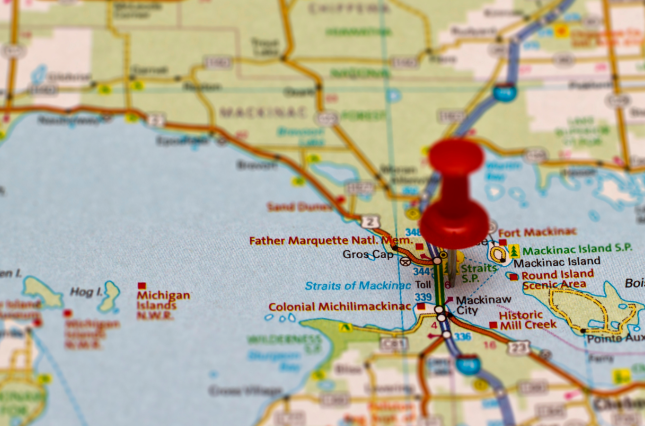
Ask President Biden and Congress to Shut Down Line 5
